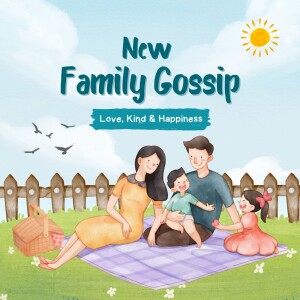

Soirée with The Sauce
https://permaculturevelocity.libsyn.com/rssEpisode List

Choosing a Preservation Method—Canning or Freezing?
Freezing is quick and easy—I understand why folks are fans. Chop green peppers, put in plastic bags, and toss in the freezer. Blanch and peel tomatoes, pack in freezer-safe containers, and stash in freezer. No doubt that freezing has a place in a preservation kitchen. I prefer to use a freezer as one of several preservation methods and not rely on it heavily. A freezer failing would make me sad and freezers fail from time to time. Instagram: Soirée-Leone Website: soireeleone.com Producer: Marina Darling Recorded in beautiful Hampshire, Tennessee Try a Podcasting 2.0 Certified app: Podfriend - Breez - Sphinx - Podstation - Curiocaster - Fountain In my freezer I stash, chopped bell peppers, tempe, bacon, some meats, blueberries, and pesto in small jars. Sometimes I freeze broth if I only have a few quarts and not enough to fire up the pressure canner. I rarely freeze leftovers as they take up valuable freezer space that I’d rather fill with bacon or pesto. I prefer to pressure can rather than freeze. Meat, chicken, fish, broth, carrots, beans, tomato sauce, and so forth are ready to use—no need to remember to defrost. I seem to remember to defrost exactly when I would like to making whatever it is that is frozen. Jars of foods that can put food on the table quick—no defrosting required. When I am canning I prefer to can tomato sauce and tomato paste so the food is ready to go in the way that I tend to enjoy it. Cooking down all the tomatoes at once rather than lots and lots of jars of whole or diced tomatoes. Tomato paste ready for adding rich tomato flavor or pizza night. Canned beans—5-pounds of dried beans yield about 18 pints of canned beans ready to go. Soup on the quick—broth, meat, vegetables, beans, fermented sour corn or kimchi, and perhaps some leftovers or sauté garlic and onions—dinner. Whether freezing or canning be sure to label and apply first in, first out best practices.

Turmeric Paste Perpetual Ferment
Perpetual ferments like nuka pickling beds and pao cai are wonderful because they allow one to add and remove vegetables (and fruits) as needed to ferment then enjoy—fermented turmeric paste is another perpetual ferment. I love having the turmeric paste around as we are a household of two and having one jar of paste around is perfect for adding a handful of vegetables to then enjoy. It’s perfect when you have a radish or an apple or a couple cucumbers. The first step to all this convenient fermentation is to ferment the paste. Following Adam James’s lead in Sandor Katz’s Fermentation Journeys, combine 400 grams turmeric root, 400 grams turnips, 300 grams peeled garlic, and add 4% salt in a blender until it’s paste. I found that using my food processor didn’t yield a paste. I then fermented the paste in a 3 liter jar for nearly six weeks because I forgot—it was during winter so it would’ve taken a bit longer to be happy. I didn’t stir as the recipe indicated due to the same forgetfulness—there was some darkening on the top of the paste—but it was fermenting along happily and smelled terrific. Now the turmeric paste is happy and ready to accept foods to be fermented. I found that I love the dramatic presentation of turnips, radishes, yellow or brown onions, grapes, apples, pears and Asian pears, and cucumbers. In the summer time they are usually tasty wonderful after 3 or 4 days—in the winter it takes a week or two. I’ve found that if I need to add to the jar because the paste is running low or needs more salt, I make a half batch or so—adjusting the salt as needed—and add it to the existing paste. Stir and resume using the paste after a few days. While I am sure that the creative culinary folks will have lots of ideas about using the turmeric paste for cooking or adding to other ferments, I always use it to get a curry kicked off. It’s more than half way there—sauté some garlic, ginger, etc. add the paste, and add a can or two of coconut milk. Done. Add tofu or meat if you like. Dinner on the quick along with some noodles or rice. Instagram: Soirée-Leone Website: soireeleone.com Producer: Marina Darling Recorded in beautiful Hampshire, Tennessee Try a Podcasting 2.0 Certified app: Podfriend - Breez - Sphinx - Podstation - Curiocaster - Fountain

Care of the Homestead Septic Tank
Jamming loads of potato peels into the garbage disposal is a holiday season rite of passage. Garbage disposals are a nice way to grind up food debris so that it flows down the drain lines to the septic tank or waste water lines. However, garbage disposals do not handle loads and loads of potato peels or other waste effectively—because they are not compost bins or rubbish bins. One time I unclogged a neighbor’s sink—pineapple skins were the culprit. My view is that we shouldn’t treat our drains whether in the bathroom or kitchen as rubbish bins. Save time and hassle by discarding organic debris in another way—compost bin outside or worm bin under the sink or if your area has a composting program. Garbage disposals are unnecessary and they encourage us to use our plumbing as part of a solid waste disposal system which it isn’t designed or intended to be. #allcitiesshouldhaveacompostingprogram Recommended reading: Lloyd Kahn’s The Septic Tank Owner’s Manual. Shelter Publications, 2017. Or start with the tons of free information: https://oasisdesign.net/wastewater/septic/failure.htm All the added organic matter is bogging down systems and costing who knows how much in clogged drains, clogged sewer lines, additional load on municipal waste water systems, additional septic tank clean outs, failed leachfields, and so forth. Save money and headaches. Some recommendations: Use grey water friendly products. This is good practice to get ready for having a grey water system or moving to a rural area with a septic tank. The major consideration is sodium and boron (borax) as ingredients. Learn more about grey water: https://oasisdesign.net/greywater/ or https://greywateraction.org/greywater-faq/ Years ago I tried every product that I could get my hands on for dishwashing, laundry washing, hair and body washing, the bottom line was that many of the products were just not good. Sometimes the price was super high and/or the products were not always available. These products work for us: Dr. Bronner’s Sal Suds for dishwashing and I keep a couple bottles of Ecos on hand in case we run out—Dr. Bronner’s is available in gallon jugs which is nice. Soap nuts for hand washing clothes, Dr. Bronner’s for dirty, sweaty summer clothes, and Ecos for not so dirty clothes. We scrub with Bon Ami and Barkeeper’s Friend. Vinegar, water, and a bit of Sal Suds cleans surfaces. I do use an ammonia solution to clean windows—no amount of scrubbing and vinegar is going to keep out woodland windows clean without sweatin’ to the 80s. Our windows need to be cleaned quarterly—I strive—and the extra time to save what amounts to a bottle of ammonia every five years isn’t worth it to me. That said, if I had small children, I would scrub, scrub and use vinegar. Use a drain screen to catch all the organic debris and toss in the compost bin or worm box. Consider a lint catch for your washing machine as a first step and laundry to landscape diversion as a next step if possible. Catch and compost all the food debris and lint. Dispose of used cooking oil properly—in a septic tank oil creates an oily layer which isn’t good for septic tank health. Wipe out oily pots and pans with a paper towel and compost or scrape out well. We use a paper towel dispenser in our kitchen with paper towels that are tri-fold, unbleached, and made from recycled paper. One case lasts 14 months at an expense of about $2.86/month. A bit of a splurge but we like the convenience and all the used towels are composted. We also use tons of towels and dish towels in the kitchen so that towels can be changed frequently. Dispose of rich pasta and rice cooking water in another way or use for other cooking. Dispose of acidic or sweetened bagel boiling water in another way. If you have a septic tank consider spreading out loads of laundry, showers, and baths, so that your septic tank isn’t overloaded. And also don’t flush anything extra down the toilet—tissues and paper towels are not intended for flushing and clog things up. Limit toilet paper use and consider a bidet attachment for toilets. In the city limiting the debris and water that heads down can alleviate clogs and if we rely on a septic tank less debris that we pay to have pumped out and hauled elsewhere. We can save money and add bulk to our compost bin. Before you buy a house with a septic tank have it inspected. Make sure the size of the septic tank is appropriate for the number of water outlets. In some instances folks have already diverted grey water, inspect any grey water diversions. As many of us conserve water—it is important to remember that clear flowing pipes rely on a certain amount of water carrying things on their way. Folks who conserve water tend to have more clogs than those who use more water. Conserve water—but also make sure waste water is freely flowing. Check those p-traps and so forth. Not sending extra organic debris is going to be very helpful too. Instagram: Soirée-Leone Website: soireeleone.com Producer: Marina Darling Recorded in beautiful Hampshire, Tennessee Try a Podcasting 2.0 Certified app: Podfriend - Breez - Sphinx - Podstation - Curiocaster - Fountain

Garden Happiness
In 2008 there was flurry of folks starting gardens and again in 2020—both coupled with a run on canning jars. A gardener needs jars to put up the harvest—so do plan for a garden doing well—if not this year then next year. Buy canning jars and other preservation equipment and ingredients well ahead of canning season. Instagram: Soirée-Leone Website: soireeleone.com So, folks considered the economy and such and urban gardens popped up in backyards, side yards, and on occasion front yards. DIY or prefab raised beds, bags and bags of “garden soil,” pony packs of vegetable plants, drip lines and timer, and so forth. Often within weeks the garden became a barren, neglected patch. On my walks with the dog to Sunset Cliffs I would watch the excitement and progress with happy (albeit hopped up on nitro garden plants) getting tucked into new homes and slowly (and almost surely) be loved less and less. What the happened? I would stop and talk to the garden. I wanted to leave garden love notes for the owners who were probably at work. Hello Neighbor! I love your little garden. I encourage you to keep it up. Consider mulch and deep hand watering. First season gardens are tough so don’t be discouraged—keep planting, keep watering, keep spreading compost. Replace plants that don’t make it. This garden wants to flourish. Keep gardening! Then sign it with a heart or something. Garden success and happiness, in my experience, relies on starting small, lots of observation, hand watering so that you are in the garden observing and catching things like pest and disease pressure early. Less is nearly always more. At least one gardening book—one that you really like as in the style of the photos and the tone of the writer resonate with the kind of garden you would like to have. Alys Fowler is my personal favorite garden writer and gardener. A garden is a reflection of the gardener. My garden book recommendations: https://www.soireeleone.com/resources/gardening My favorite garden book: Alys Fowler's Garden Anywhere: How to grow gorgeous container gardens, herb gardens, kitchen gardens, and more—without spending a fortune. Chronicle Books, 2009. If you are in the Southeast U.S., I highly recommend: Ira Wallace's Vegetable Gardening in the Southeast. Timber Press, 2013. Rather than planting it all, consider planting what you will appreciate eating and what is most likely to do well with the time you have to be in the garden. In our little garden this year, I’ve only planted squash, cucumbers, tomatoes, eggplant, hot and sweet peppers, celery, and a few other little things. I have one large container with a few herbs. I’ve planted some flowers too and popped in a few perennials. Perennials can be anchors in a garden—they keep keeping on while annuals flourish or alternatively don’t flourish and need to be replaced. Perennials keep you smiling while the other details get worked out. My little garden isn’t much this year but it is rewarding and for the fall and winter garden I will plant more. I used to be sad and miss my old productive garden—then I started to think about how long it took to have a vibrant productive garden. Start small and keep at it. Starting with one 8’x4’ garden is a beautiful thing for a new garden then go ahead and prep additional beds for the next season. Continue building the compost pile and collecting organic matter to mulch. Start a garden. Start small. Look left and right and follow the lead of gardens in your area. Listen to the experiences of gardeners in your area. Gather seeds, cuttings, and starts from friends and neighbors. Peruse books for ideas and inspiration. Read seed catalogs. And most of all, get out there and garden—as often as possible. Producer: Marina Darling Recorded in beautiful Hampshire, Tennessee Try a Podcasting 2.0 Certified app: Podfriend - Breez - Sphinx - Podstation - Curiocaster - Fountain

Cheesemaking Philosophy & Learning to Make Cheese
I love cheesemaking. When I first learned to make cheese in 1991, I didn’t think or know that I should be scared or concerned about doing it wrong. I was raised with a can do attitude, just do it, learn, learn more, then down the road master it or at least be better at it. There are risks but cheeses often tell us we screwed up. Bloated, bouncy cheeses are obvious for example. Off colors and undesirable textures and smells are also obvious. Quite unlike Clostridium botulinum, which causes botulism, hanging out with nary a sign of its paralyzing presence looming in a jars of home canned food, improperly cured meats, and so forth. Absolutely employ good milking practices from a healthy herd, milk from a trusted source, attentiveness to cleanliness of the cheesemaking equipment, etc but beyond that I just jumped in and still jump in—I didn’t have anyone or the internet to warn me otherwise. With one thin cheesemaking book that I picked up used, I dove in. Some of my first cheeses were from allowing milk to naturally clabber and junket rennet cheeses. I was so excited when I spotted junket rennet at the local Hy-Vee! I didn’t know about chymosin and pepsin and the difference between junket which is for making custards and legitimate cheesemaking rennet. But, I made cheese and it was exciting. It opened up a whole world to me—a world that I love dearly to this day. Instagram: Soirée-Leone Website: soireeleone.com Recommend Reading Mastering Artisan Cheesemaking by Gianaclis Caldwell This book is a master class in book form and I highly recommend this book. She also has another book Mastering Basic Cheesemaking but if you are ready to get in the fast lane then Mastering Artisan Cheesemaking is a great start. Rather than mimicking cheeses from around the world; learn what makes all the different textures, flavors, and so forth. Make a cheese that is truly your own even if using commercial cultures. It is difficult, perhaps impossible, to duplicate the famous cheeses or regional specialities as so much relies on those pastures, those dairy animals, that climate, those caves and aging spaces, those techniques, that equipment, that scale, and so forth. Be inspired by all those magical cheeses and make your very own. The Art of Natural Cheesmaking by David Asher With a solid foundation in making cheese from Gianaclis you can make some amazing natural cheeses (no commercial cultures, non-GMO rennets or alternative rennets, natural wrapping, washing, brushing etc.) Make a cheese that truly represents your local terrior. And also check out Trevor Warmedahl on Instagram and prepare to have your mind blown! milk_trekker He also has a substack so check that out too.Thank you for sharing the wealth of your travels Trevor! Producer: Marina Darling Recorded in beautiful Hampshire, Tennessee Try a Podcasting 2.0 Certified app: Podfriend - Breez - Sphinx - Podstation - Curiocaster - Fountain
Create Your Podcast In Minutes
- Full-featured podcast site
- Unlimited storage and bandwidth
- Comprehensive podcast stats
- Distribute to Apple Podcasts, Spotify, and more
- Make money with your podcast











